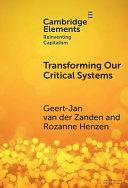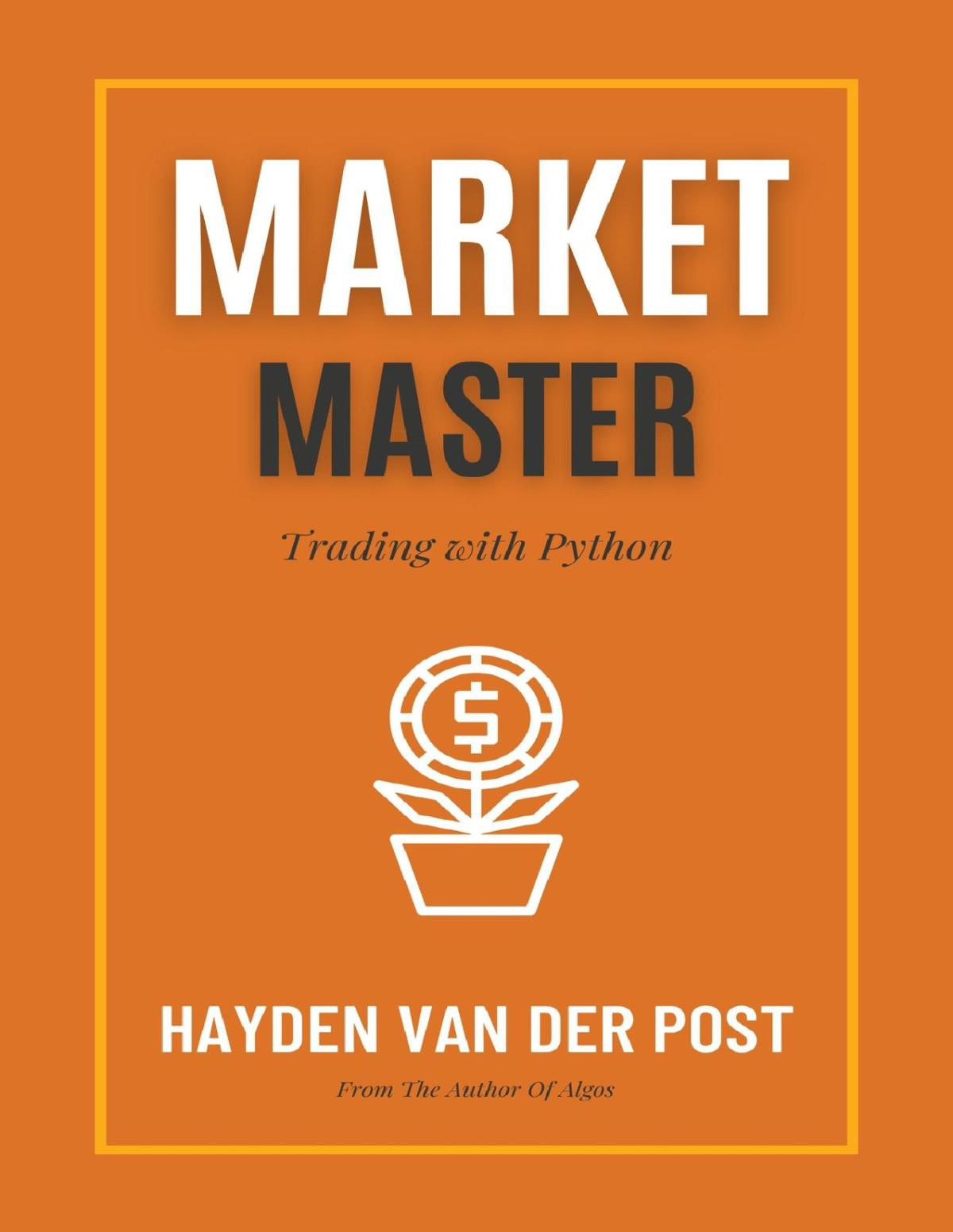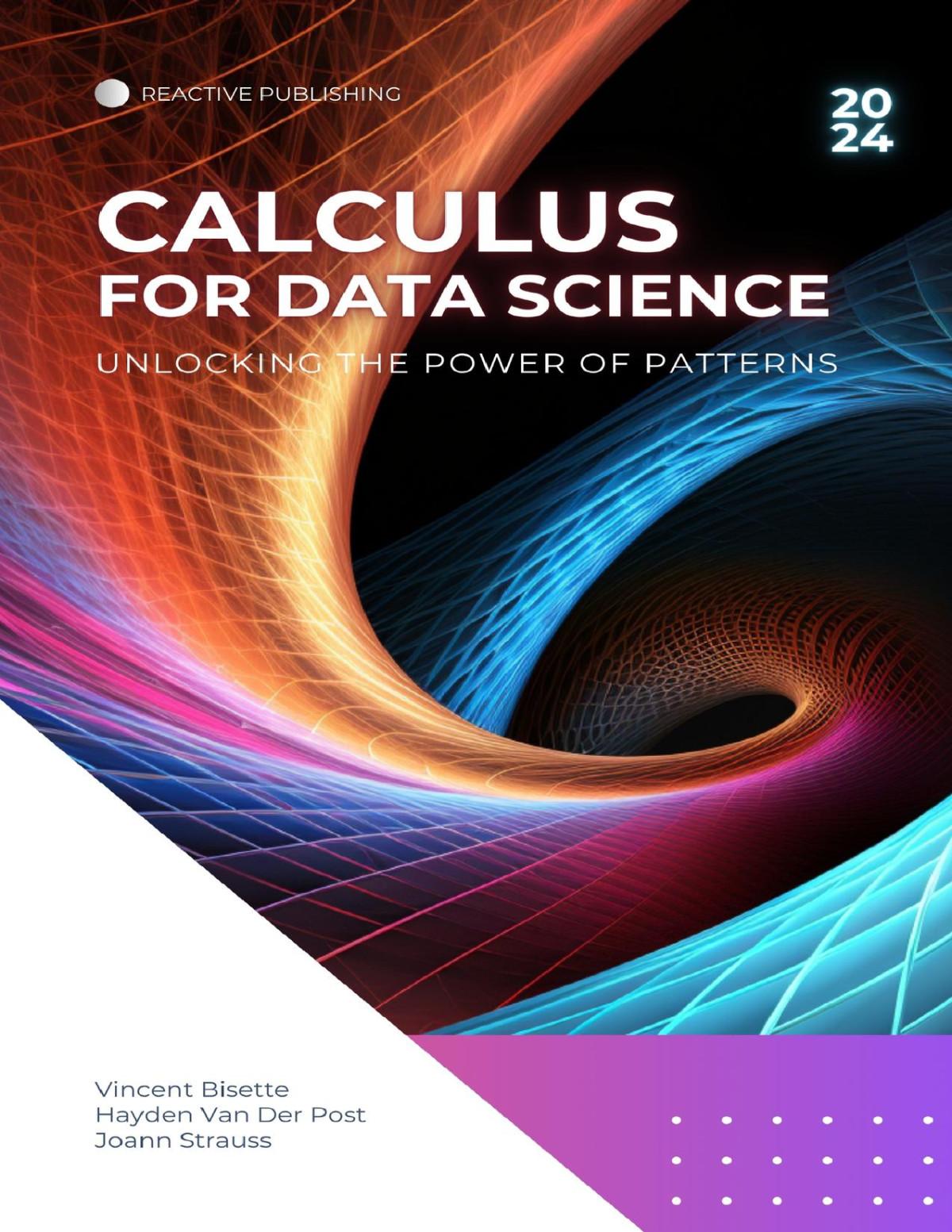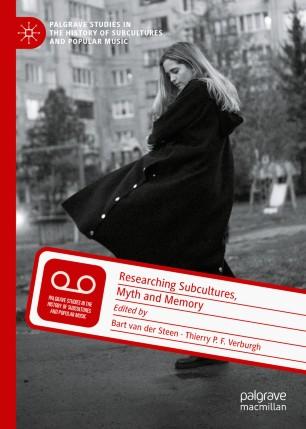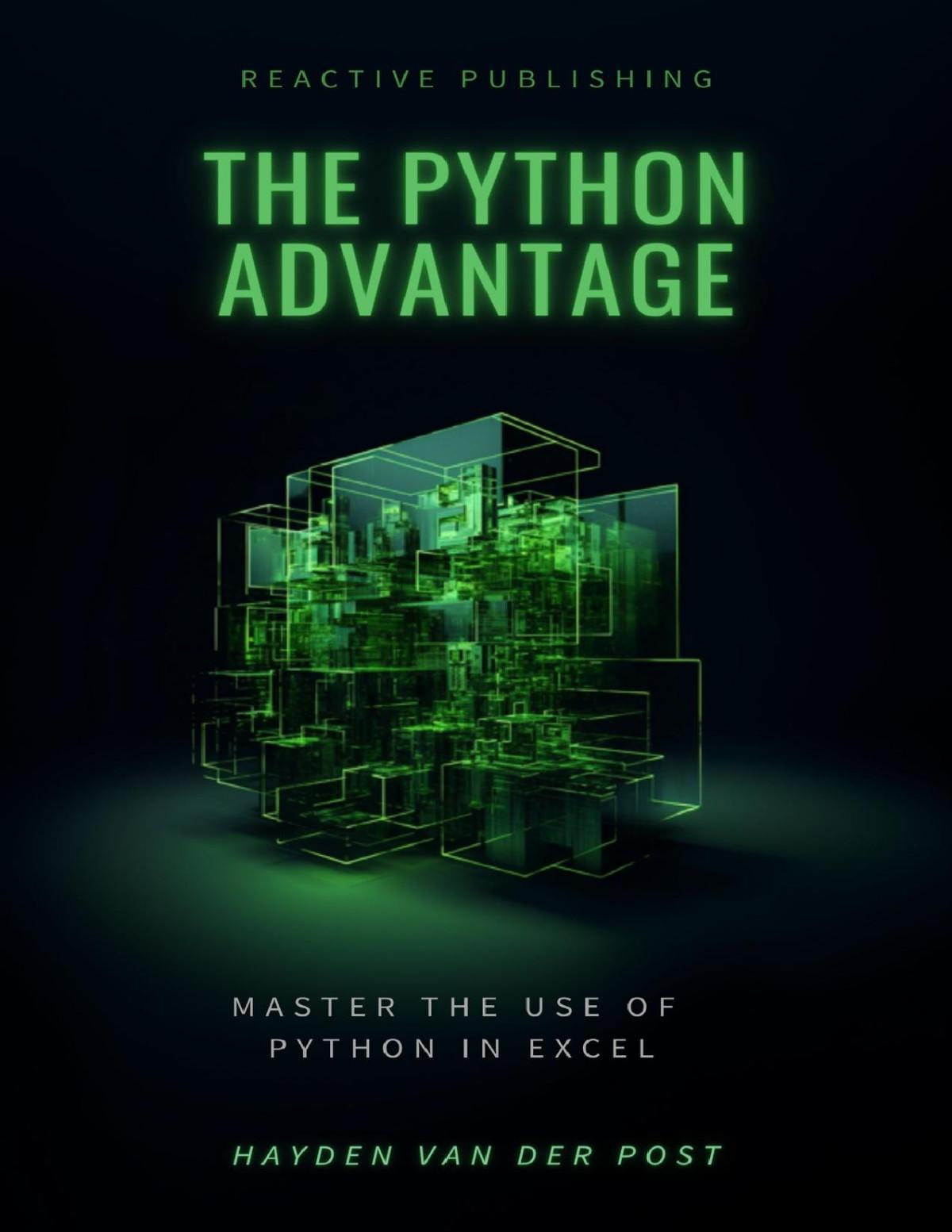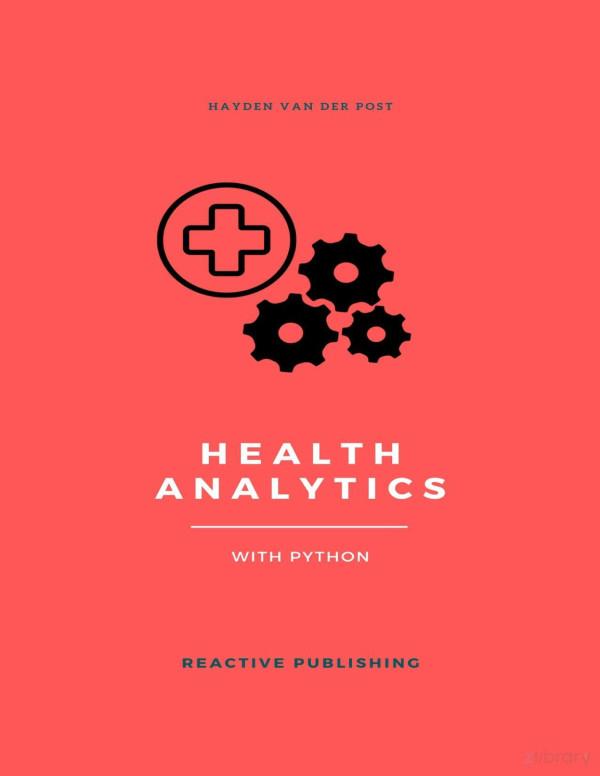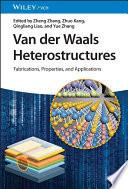TransformingOurCriticalSystems
HowCanWeAchievetheSystemicChangetheWorldNeeds?
ElementsinReinventingCapitalism
DOI:10.1017/9781009410311
Firstpublishedonline:January2024
Geert-JanvanderZanden
SasinSchoolofManagement
RozanneHenzen
SasinSchoolofManagement
Authorforcorrespondence: Geert-JanvanderZanden, gj.vanderzanden@ sasin.edu
Abstract: Economicgrowthhascatalysedenormousprogressinthe world,butwehaveenteredaneraofperverseeconomicgrowth,atthe expenseofsocialandnaturalcapital.Astheworldrunsfurtherbehind ontheSustainableDevelopmentGoals,managingandmitigatingthe loomingenvironmentalandsocialcrisesinanincreasinglyvolatile, uncertain,complexandambiguousworldwillbeoneofthebiggest challenges,butalsooneofthebiggestcommercialopportunities,of ourtime.Buildingonearlierresearchonsystemicchange,usingthe WHAT-HOW-WHYframework,thisElementpresentsactionable insightsfortheradicalsystemicreinventionofour ‘criticalsystems’ that satisfyhumanandsocietalneedssuchasnutrition,mobility, infrastructureandhealth.Wehighlighttenemergingparadigmsfor future-fitsystemicchange,discusshowstakeholdermindsetscanbe developedandpresentnewskillsforleadersandapathwaytoenable companiestobecomedriversofcollaborativetransformation.Thistitle isalsoavailableasOpenAccessonCambridgeCore.
ThisElementalsohasavideoabstract: www.cambridge.org/vanderzanden-henzen
Keywords: transformation,leadership,sustainability,systemic/system change,mindset,collaboration
©Geert-JanvanderZandenandRozanneHenzen2024
ISBNs:9781009475655(HB),9781009410328(PB),9781009410311(OC)
ISSNs:2634-8950(online),2634-8942(print)
Prologue:ThePurposeofThisElement
Sincethebeginningoftime,humanityhasorganiseditselftosatisfyitsneeds, fromthebasicneedsoffeeding,housingandstayingsafeandhealthytomore elevatedneedsofdevelopingandmanagingcommunities.Asaresult,wecreate tremendouswealth,livelonger,getsmarter,sufferless,enjoyricherexperiences andourspecieshasgrownexponentially.Wearelefttowonder,though,isthis therightmeasureofsuccess?
Toalargeextent,mankind’ssuccesshascomefromitsabilitytoharness nature.IntheNetherlands,wherewebothgrewup,apopulouscountry,athird ofwhichisbelowsealevel,harnessingnatureispartofthenationalpsyche.But, unfortunately,oureagernesstoharnessnaturehasturnedintoadestructive force,erodingtheverythingwearepartofanddependon:nature.
Dutchcultureisalsoverypragmaticandinquisitive,whichhashelpedus questionthings,openourmindsandlearnwhileworkingandlivingindifferent countriesaroundtheworld.Thisiswhere,forbothofus,ourcuriosityoriginated toquestionandrethinkthewaymankindorganisesitselftosatisfyitsneeds.
Associetalimbalancesandtensionsbetweenhumanityandnaturecontinue toescalate,mereincrementaladjustmentstolegacymodelsarenolonger sufficient.Instead,thereisanurgentneedforaradical,holisticandsystemic transformationofourcurrentmodels.Variousscholarshaveacknowledgedthe immensechallengesinvolvedindeliberatelyalteringcomplexsystems,andwe willdelveintothesecomplexities.TheprimaryobjectiveofthisElementisto expanduponexistingideasandestablishaconnectionbetweentheoretical literatureandpracticalapproachestoaccomplishactionableinsightsforsystemicchange.Moreover,theElementaimstoexplorethefacilitationofnecessaryshiftsinmindsetsandcross-sectorcollaborations,withaspecificfocuson thebusinesssector(andbusinesseducation),whosecrucialroleinsystemic changeprocessescurrentlyremainsrelativelyunder-explored.
Inaddition,fromGeert-Jan:Whileescapingfromthebigcitybustle,during reflexivehikesinTaiwan’smountainouscedarforestsanddivesinSoutheast Asia’scoralreefs,itbecameincreasinglycleartomethatourrealmeasureof successshouldbetoliveinharmonywithournaturalandhumanenvironment, workingwithnature,notagainstit,andmakingsureweleavenoonebehindwhen wepursuewealthandwell-being.Thiswillbethebiggestchallengeandthe biggestopportunityofourtime.
CombiningbusinessstudiesinEuropeandtheUSAandstudiesinenvironmentalmanagementandpolicyinScandinaviawithdecadesinbusinessas apractitionerandexecutiveadviserinsustainabilitytransition,Iamnow honouredtobeabletosharemyinsightsasavisitingprofessoratSasin
SchoolofManagement,inBangkok,helpingtoprogressasustainabilitymindsetinaregionthatwillbeapivotalhotspotinhumanity’seffortstomitigateand adapttotheeffectsofclimatechangeandresourcedepletion.Followingan articleonsystemicchangein AACSB magazine(AssociationtoAdvance CollegiateSchoolsofBusiness),ProfessorArieLewinrequestedmetoshare moreonthistopicinanElementintheReinventingCapitalismseriesof CambridgeUniversityPress.Giventheverychallengingtrajectorytherelationshipbetweenmanandnaturehasbeenonthislastcenturyandtheurgencyforus tomoreradicallyandholisticallyaddressmanyofourcomplexsocietalproblems,Iamgratefulforthisopportunityandhopetheframeworksandthoughts expressedinthisElementwilltriggerfurtherconstructivethinkingandaction.
Inaddition,fromRozanne:Ihavebeenworkingwithinthefascinatingworld ofsustainabilityandcircularityforthelastdecade, firstasastudent,thenas aresearcherandauthor.Ithasbecomeapparentthatideasontacklingour twenty-first-centurychallengeshavebeenvoicedbymany,buttheaction neededisrunningbehind.Humansareuniqueinthesensethatwehavethe powertocombineideas,havethoughtsaboutthoseideas,sharethemwith others,buildonthemandbringthemtolife.Iwanttocallonyou,ourreaders, tochangeyourperspectivefromconsumertoconcernedcitizen,andshiftfrom individualisticthinkingtowe-thinking,tohelpmagnifythepowerofthese ideas.Notthattheresponsibilitytosolveour21st-centuryproblemslieswith theindividual;tome,itshouldbeacombinedmulti-stakeholdereffort,butall individualshavetheabilitytotakethatcitizenperspectivewiththemintheir workanddailylives.Andnow,specificallytomyfellowMillennialsandGen Zreadersbecausewefeeltheweightoftheworldpressingdownonus:wehave theopportunitytocreateanewsysteminwhichwewillnotmakethesame mistakesourparents’ andgrandparents’ generationsdid.Withthehelpof creativity,innovationandtrustinourcapabilities,wecanmagnifyourpower torethink,redesignandrearrangeourfutureandournow.
ExecutiveSummary
Economicgrowthhascatalysedenormousprogressintheworld.However, focusoneconomicgrowthaloneinmanywayshasbecomeadestructive force,promotingshort-termwinsoverlong-termprosperity,depletingnatural resourcesandwideningexclusion.Attheexpenseofsocialandnaturalcapital, wehaveenteredanincreasinglyperverseeconomicgrowthera.Environmental andsocialchallengesconstitutethemostsignificantriskstobusinessesand societytoday.Thereisincreasingawarenessamongleaders,consumersand capitalprovidersthatwemustradicallyreinventhowwesatisfyhuman andsocietalneedstomanageandmitigatetheserisks.Weneedtoreinvent
thegrowthmodelforthesocietalandenvironmentalrealitiesofthetwenty-first century,toworkwithnature,notagainstit,andcreatevalueinthelongrather thantheshortterm,formany,notjustaprivilegedfew.
DespitebiggovernmentalandcorporatecommitmentstowardstheSustainable DevelopmentGoals(SDGs),theworldisrunningbehindinthesustainability transition.Tolimitglobalwarmingto1.5°Candavoidthechanceofcatastrophic impacts,CO2-eq(CO2 equivalent)emissionsneedtobereducedby45percent from2010levelsby2030.Instead,basedonallnationalcommitmentsmadeasof March2023,CO2-eqemissionsareexpectedtoriseby10percentby2030. Moreover,aswegetfurtherbehindintheimplementationoftheseplans,the urgencyandtheneedincreaseforradicalsystem-levelreinventioninsteadof marginalinnovationofthe ‘criticalsystems’ thatsatisfyourbasichumanneeds, suchasnutrition,mobility,infrastructureorhealth,andthe ‘supportingsystems’ thatenablethecriticalones,suchas finance,energy,educationorgovernance.
Theneedtoachieveradicalimpactinarelativelyshortperiodisoneofthe biggestchallengesandbiggestcommercialopportunitiesofourtime.As aresult,unprecedentedgovernmentalandprivatefundingisbecomingavailable foroursystems’ environmentallyresponsibleandsociallyjustreinvention.
Systemsarecomplexbecausetheyinvolvemultipleactorsandstakeholders withoftendiverseobjectivesandprioritiesandnumerousconnectedsubsystemswithgovernancecontextsanddynamicsoftheirown.Systemsthinking givesusavaluablewaytounderstandtherelationshipsbetweenthecomponents andactorsinasystemandforeseetheintendedandtheunintendedrippleeffects ofourinterventionsinthatsystem.
Historyhastaughtusthatleveragepointsforsystemicchangeareoften counter-intuitive.InthisElement,weexpanduponexistingideasandestablish aconnectionbetweentheoreticalliteratureandpracticalapproachestoaccomplishactionableinsightsforsystemicchange.Wedothisbyanalysingexamples ofsystemicchangeeffortsinmultiplesystemsandgeographiesthroughthelens ofamodificationoftheSystemicInterventionFrameworkoriginallyintroduced byDonella Meadows(1999).WecategorisetheseinterventionareasasWHY, HOWorWHAT,andbringforwardthefollowingpracticalinsights:
1.WHATwithoutWHYinterventionsarelikelytodeliversuboptimaloutcomes.
2.Lackofalignmentbetweensubsystemshinderssystemicchange.
3.Silver-bulletsolutionsrequireincreasedprecautiontopreventunintended consequences.
4.WHYinterventionsrequireinvestmentincollaborativeprocesses.
5.Oldmindsetsareunlikelytoproduceanewsystem.
6.Bigcommitmentsneedreinforcement.
Changeiscomplex,andsystemicchangeintoday’svolatile,uncertain,complex andambiguous(VUCA)environmentevenmoreso.Practiceshowsthatinterventionsdictatedbyoneactoroftenrealiselimitedorcounterproductiveimpactat thesystemlevelbecausetheylackasystemunderstanding,asharedmindsetand asharedvisionacrossstakeholders.Thesuccessfulreinventionofsystems thereforerequiresmulti-stakeholdercollaboration.Inthiscontext,stakeholders likeregulatorsandpolicymakers,business, financeproviders,technologyinnovators,empoweredcitizens,educationalinstitutionsandchangemanagersallplay vitalroles.Theycancollectivelycreatethenecessaryconditions,incentives, paradigms,values,mindsetsandculturesthatfostereffectivemulti-stakeholder collaboration.Byworkingtogether,thesediverseactorscandrivemoresignificantprogresstowardsthecrucialtaskofreinventingcriticalsystems.
ThisElementexplainswhybusinessisideallypositionedtoleadthemultistakeholdercollaborationforthemuch-neededtransformationofourcritical systems.Companies’ relationshipwithsocietyisevolvingfromonewhere companiesseesustainabilitychallengesasarisktoonewheresustainability andsystemictransformationareseenasopportunitiesfornewgrowth. Businessescanconvertintotransformationalorganisationsbyaligningstrategic visioningwithstrengtheningoforganisationalcapabilitiesanddevelopmentof collaborativenetworksforimpactandnewgrowth.
Theparadigmandthemindsetoutofwhichasystemanditsobjectivesemerge arethestrongestpotentialinterventionpointsforsystemicchangebutalsothe mostchallengingones.ThisElementdescribestenemergingparadigmsthatwill facilitatefuture-fitsystemicchangeandexploresthepotentialandthedynamics ofchangingmindsetsbetweencorporateandpublicactorsandcitizens.Business educationcanplayacriticalroleinanchoringfuture-fitparadigmsandcultivating thenecessarymindsetforourfutureleaders.Leadershipskillsandtoolscanbe developedthatempowerleaderstodrivechangeinthemselves,theirorganisationsandthesystemstheyarepartof.Weareconvincedthatbystrengthening skillssuchascontextualmindfulness,futureconsciousness,systemsrange,crosscollaborativecompetence,radicalimpactagilityand,mostimportantly,purpose, wecandevelopagenerationofmorerounded,humanisticleadersthatcanlead thetransformationtoafutureofmoresustainableandsociallyjustmodelsof valuecreationwithinourplanetaryboundaries.
1ReinventingValueCreation
Undoubtedly,economicgrowthdrivenbyshareholdercapitalismhascatalysed enormousprogressworldwide.Ithasallowedustofeed,house,moveand servicebillions.Nevertheless,theinventorofthemoderngrossdomestic
product(GDP)conceptin1934,SimonKuznetshimself,warnedthatasingular focusoneconomicgrowthistoosimplisticasitfailstoconsiderthequalityand distributionofgrowth,orthedistinctionbetweentheshortandthelongterm: ‘Thewelfareofanationcanscarcelybeinferredfromameasurementof nationalincome’ (Kuznets,1934,p.7).
DespiteKuznets’ warningbeingoftenquotedinrecentyears,andproof stackingupthatourcurrentgrowthmodelisbroken,theaddictiontoGDPas theultimatemeasureofsuccessseemsstubbornlyhardtoshakeineconomic, businessandpoliticalcircles.Theno-braindefaultsolutionthatmostgovernmentsandcentralbanksstillseemtohaveforeconomicslowdownistoboost consumption,increasepublicspendingandlowerthecostofcredit,incentivisingusalltobuy ‘morestuffwedonotneedwithmoneywedonothaveto impresspeoplewedonotknow’,andfurtherdrivinginequalityintheprocess.
1.1It’stheEconomy,Stupid ... orIsIt?
Wehaveenteredaneraofperverseeconomicgrowth.Ourcurrentmodelis increasinglygeneratingeconomicgrowthattheexpenseofnaturalandsocial capital.Astudyby Trucost(2013) concludedthattheannualexternalities,the costtonaturalcapital,ofoureconomicactivitywere$7.3trillion,roughly 13percentofglobalGDP,withgreenhousegas(GHG)emissionsfromcoal powergenerationinEastAsiaandNorthAmerica,landusefromcattleranching inSouthAmericaandSouthAsia,andwateruseinwheatfarminginSouthAsia toppingthelistofexternalities.
Similarly, Goh,PfefferandZenios(2015) estimatedthespendingonhealth caretocombatdepressionandburnouttobemorethan$190billionperyearin theUSAalone.Ironically,thisexpenseresultingfromthedeteriorationofsocial capitalisformallyconsideredacontributiontoGDP.Anotherstrikingexample istheexpenseofwar.Despiteoftenbeingattheexpenseofformsofsocial capitallikeeducationorhealth,the$14trillionspentbythePentagonsincethe startoftheAfghanwarin2001perverselycountstowardsGDPgrowth,while thelossoflivesandthedestructionofassetsarenotdirectlyaccountedforinthe GDPcalculation(BrownUniversity,2021).
Weneedtogenerateeconomicwell-being,butnotattheexpenseofnatural, humanandsocialcapital,thusavoidingperversegrowth.Anthropogenicclimatechange,waterandresourceshortages,biodiversitylossandsocial inequity,withtheirinterrelationsandknock-oneffects,significantlyimpact businessandsociety.Inthenexttenyears,theyallposeanenormousthreatin termsofbothlikelihoodandimpact.Accordingtothe GlobalRisksReport2023 bytheWorldEconomicForum(WEF,2023),eightofthetoptenmostsevere
Top 10 Global Risks
by Severity
Over the next 10 Years
Risk categories:
Failure to mitigate climate change
Failureofclimatechangeadaptation
Natural disasters and extreme weather events
Biodiversity loss and ecosystem collapse
Large-scale involuntary migration
Natural resource crises
Erosion of social cohesion and societal polarization
Widespread cybercrime and cyber insecurity
Geoeconomic confrontation
Large-scale environment damage incidents
I Economic I Environment I Geopolitical I Social I Technological
Figure1 Eightofthebiggestglobalrisksinthenexttenyearsare environmentalorsocial.
globalrisksoverthenexttenyearsareenvironmentalandsocietal(see Figure1):failuretoadapttoandmitigateclimatechange,naturaldisasters, biodiversityloss,extremeweathereventsandecosystemcollapsewilldirectly influenceandbeinfluencedbyothersignificantrisksidentifiedinthereport, suchaslarge-scaleinvoluntarymigration,naturalresourcecrises,erosionof socialcohesion,geo-economicconfrontationandlarge-scaleenvironmental damageevents.
OurobsessionwitheconomicGDPhasmadeuscollectivelylosesightofthe factthat,accordingtothe WEF(2020),$44trillionofeconomicvaluegeneration –morethanhalfoftheglobalGDP – reliesmoderatelyorhighlyonnatureandits services,andisthereforeexposedtolossesofnature.Butweextractmorenatural resources,returnmoreGHGtotheairandgeneratemorewastethantheearth’s naturalcyclescancompensatefor.
WewillsoonseeourGDPgrowthnegativelyaffectedbyourfailuretoact effectivelytomitigateclimatechange.A2021analysisofclimateandtransition risksbytheworld’slargestinsurancecompany,SwissRe,concludesthatunder thecurrenttrajectory,theimpactsofclimatechangearelikelytoreduceglobal GDPby11–14percentby2050comparedtoasituationwithnoclimatechange (SwissRe,2021).Bycomparison,duringCovid-19lockdownsin2020,global GDPdropped3.3percent.Moreover,becausesocialandenvironmentalissues aresocloselyrelated,thisalsocontributestosocialinjusticeandadeclinein socialcapital.Agricultureandnaturalresourcesareessentialforthesurvivalof threeoutofeveryfourindividualswholiveinpoverty.Owingtotheirincreased exposuretofoodandlivelihoodinsecurity,conflictandthehealthimplications
ofextremeweatherevents,theyaremorelikelytobedisproportionately impactedbyclimatechange.
Inanexploratoryscenarioanalysisofthevulnerabilityandreadinessof135 countriesinrelationtoclimatechangeoverthenext30years, S&PGlobal Ratings(2022) findsthatbecauselower-andlower-middle-incomecountries aremoreexposedtotheeffectsofclimatechangeandhavelesscapacityto adapt,owingtoweakerinstitutionsandlower financialcapacity,thesecountries arelikelytosee3.6timesmorelossesonaverageowingtoclimatechange incidentsthanhigher-middle-andhigher-incomecountries. SwissRe’s(2021) stresstestsshowthatclimatechangewillimpactforty-eightcountries,representing90percentoftheworldeconomy.Thedisruptionandtheinvestment requiredforeconomiesandsocietiestoadaptarehighestinAsia:Chinaisatrisk oflosing24percentofitsGDPwithoutanymitigationactions,whileEuropeis headingtoalossof11percentandtheUSAstandstolosecloseto10percent. SoutheastAsiacouldseeGDPreducedbyasmuchas29percent.
Mostofoureconomicgrowthmodelsarebasedonmaterialthroughput, populationgrowthandthemyopicbeliefthatmorepeopleproducingandconsumingmorestuffwillgrowourGDPand,thus,ourwell-being.Despitehistory beingfullofexamplesofcivilisationsfallingbecauseoflivinginimbalancewith theirnaturalenvironment(suchastheSumerian,theMayanandtheAngkor civilisations),theselastdecadesweareagainlearningthehardwaythatour legacygrowthmodel,toofocussedoneconomicwealthcreationalone,isbringingunintendedandundesiredconsequences.Despitehavingcreatedtremendous economicvalue,ithasbecome,inmanyways,adestructiveforce,causing climatechangeanddepletingnaturalcapital,promotingshort-termwinsover long-termprosperityandwideningsocialexclusion.Environmentalandsocial costs,inherentbutpreviouslyhiddenintheoldgrowthmodel,makeitglaringly evidentthatouroldmodelisunsuitableforthefuture.
Humanity’sbiomassaccountsforonlyoneten-thousandthofthelifeon Earth,measuredbythedryweightofcarbonthatmakesupthestructureofall livingthings(Bar-Onetal.,2018).However,humanshaveanenormously outsizedinfluenceonallotherlivingthingsand,becauseofthat,ourcurrent pathwaylooksasfollows:
• Thehumanpopulationhasgrownfrom2billioninthe1920stomorethan 8billiontoday.Moreover,thistrendwillonlycontinue,reaching10billion peoplegloballyinthemid-2050s.Therefore,thebiggestchallengeofour generationistosatisfytheneedsof8billionto10billionpeopleinwaysthat donotsurpasstheenvironmentallimitsorerodethesocialfoundationsof oursocieties.
• Climatechangeisoneofthebiggestcrisestheworldiscurrentlyexperiencing.Itisacceleratingandbringingtheworldclosetoirreversiblechange:out of fifteenclimatetippingpointsidentifiedbytheIntergovernmentalPanelon ClimateChange(IPCC),ninearealreadyatthepointofnoreturn,suchasthe warmingoftundrasinthenorthernhemisphere,whichiscausingathawingof permafrost,releasingvastamountsofthepotentGHGmethaneintothe atmosphereandtriggeringfeedbackloopsthatbringtheclimate,andus, dangerouslyclosetoirreversibletippingpoints(IPCC,2020).
• Ourglobalannualburningoffossilfuelsistheequivalentofthegrowthofall plantsworldwidefor400years.Meanwhile,relentlessdeforestation – the equivalentofonefootball fieldevery2seconds,onlyhalfofwhichis replanted(FAO,2020) – primarilyforagriculturalconversion,hasturned theAmazonfromacarbonsinkintoanetemitterofGHG.
• Welosttwo-thirdsoftheworld’sanimalpopulationinthepast fiftyyears,partly drivenbydeforestationandbyatenfoldincreaseinthenumberofdeadzonesin ouroceansowingtoagriculturalrun-offoffertilisersandpesticides(IPBES, 2019).Thislossdirectlyaffectstherobustnessoffoodchainsandnature’s capacitytodefenditselfandusagainstpestsandtheeffectsofclimatechange.
• Moreextremeweathereventscausedbyclimatechangewillaffectfood productionandlivelihoods.TheWorldBank(2021)predicts216million additionalclimatechangemigrantsby2050inAfrica,Asia,SouthAmerica andEasternEuropealone.
• By2030,a40percentdisparitybetweenwateravailabilityanddemandis anticipated,andasmanyas700millionpeoplecouldbedisplacedbywater scarcity(HLPW,2018).Watershortagesarepredictedtoaffectoneinfour peopleworldwideby2050,notjustingeographiesliketheMiddleEast, NorthAfricaandIndiabutalsoinsectionsoftheUSA,Spainandevenmajor citieslikeLondon.Inaddition,waterscarcitythreatenstopushupfoodcosts, whichcouldcauseinstabilityandconflict.
• Theglobaleconomyextractedandusedmoreresourcesinthepastsixyears thanintheentiretwentiethcentury,andlevelsofwasteinourenvironment haveneverbeenhigher(CGRI,2023).
• Only9percentofthe300milliontonsofplasticsweproduceyearly –roughlytheequivalentoftheweightoftheentirehumanworldpopulation combined – isrecycled.Mostplasticsendupinlandfill,andanestimated 8milliontonsendupinouroceans(WEFetal.,2016).By2050,moreplastic than fishwillbeintheoceanifthecurrentoverfishingandplasticproduction ratecontinues.
• Inequalityisontherise.Ofallthenewwealthintheworld,thewealthiest 1percentoftheworld’spopulationonaper-personbasiscapturesmorethan
110timesthewealthcapturedbythepoorest50percent,whotogetherown just2percentoftheworld’seconomicwealth,accordingto WorldInequality Report2022 (WorldInequalityLab,2022).
• Covid-19hadadisproportionateimpactonpoorpeople.In2021alone, 97millionpeoplewerepushedbackintoextremepoverty,bringingthe totalnumberofpeopleworldwidelivingonlessthan$1.90perdaybythe endof2022toanestimated685millionpeople,accordingtothe WorldBank (2022).Moreover,thisnumbermightrisefurtherastheknock-oneffectsof thepandemic(inflation,economicdownturn)takeshape.
Naturehasaremarkablepotentialtosustainus,whetherthroughtherecycling ofourwater,thedigestionofourwaste,theproductionofourfoodorthe removalofCO2 fromtheairtocreatetheoxygenwebreathe.However,asour speciesexpands,sodoesourimpact.Asaresult,asman’sdominionovernature increases,thecapacityofnaturetosupplyitsservicesandtocompensateforour impactdecreases,exacerbatingtheeffectsofourperversegrowthandacceleratingthe ‘degeneration’ ofnaturalcapital.Furthermore,asournaturalcapital erodes,low-incomepopulationsaremostheavilyaffected,wideningthegap betweenrichandpooranderodingthesocialfabric.
Reasonenoughtostopandthink.Isthisthetypeofeconomicgrowthwe want?Insteadofacceleratingourdemise,weneedtomobiliseourinnovation andcollaborationcapacity,notonlytoreinventgrowthto fitwithintheplanet’s ecologicalboundariesandnotdeteriorateoursocialfoundationsbutalsoto regeneratenature’scapacitytohelpussolveourproblemsandtobolsterour socialcapitalthroughhigherlevelsofinclusion.
1.2SystemicChallengesRequireSystemicSolutions
Mostsustainabilitychallenges,suchasclimatechange,wasteandresourcechallenges,naturalcapitalloss,povertyandinequality,aresystemicchallenges:they involvemultipleactors,stakeholdersandnumerousconnectedsubsystems –social,institutional,cultural,political,economic,technicalandecological –oftenwithgovernancecontextsanddynamicsoftheirown.Asaresult,these problemsarecomplex,withmultiplecausalrelationships,feedbackloopsand oftenunforeseenconsequences.
Focussingonindividualcausalrelationshipsandinterveninginjustone aspectofthesecomplexsystemswillalmostneversolvetheproblem;rather, itwillrelocatetheproblemorcauseotherunforeseenconsequencesbeyondthe causalrelationshipoffocus.Systemicchallengesrequiresystemicsolutions. Thisrequiresadeepunderstandingofthecomplexsystemssurroundingthe challenges.Thinkingintermsofsystemshelpsusunderstandtherelationships
betweenthecomponentsandtheactorsinasystemandforeseetheintendedand theunintendedrippleeffectsofone’sinterventionsinthatsystem,thusenabling ustoenvisionthemostresponsibleapproachestosolvingcomplexsocietal challenges.
Section2 willexploresystemdynamicsinmoredetail,butforagood understandingofouranalysisandrecommendations,webrieflyclarifywhat wemeanbysystems,systemsthinkingandsystemicchange.Systemsthinking expertDonellaMeadowsde finedasystemasasetofthings – people,cells, moleculesorothers – interconnectedsothattheyproducetheirpatternof behaviourovertime( Meadows,1999).Systemsexistinthephysicalworld. Thesecanbenaturalecosystems,suchasthemarineenvironment,andour socialsystems,suchasthefoodorhealth-caresystems.Theycanalsobe sociallycreatedsystemssuchasbeliefsystems.Whenwetalkaboutsystems inthisElement,wegenerallyrefertothesystemofactors,conditionsandthe dynamicsbetweenthem,andpossiblyadjacentsystems,thathaveformed aroundsatisfyingasocietalneed,suchassocieties’ needfornutrition,mobility,shelter,health,safetyandcomfort.Thesesystemsareenabledbysupportingsystemssuchas fi nance,energy,educationorgovernance.Allthese systemsinvolvevarioussmallerpartsandorganisationsatmultiplelevels thatformanintricatewholewhosebehaviourisinfl uencedbythesystem’s structure,theinteractionofitspartsandtheconditionsaffectingthesystem anditsparts.
Pioneeredbybiologistsbutdividedoverseveraldisciplines,themaincharacteristicsofsystemicthinkingor ‘thinkinginsystems’ aroseinEuropeduring the1920s(Capra&Luisi,2014).Theseideas,especiallyBertalanffy’sconcepts ofgeneralsystemstheoryandopensystems,helpedtogivebirthtoanewway ofthinking:thinkingintermsofpatterns,relationships,connectednessand context.Theabilitytoseetheinterdependencebetweenmultipleeventshappeningindifferentpartsoftheworld,insteadofseeingthemasisolatedevents, allowsforaricherunderstandingbasedontheincorporationofmultipleand different(sometimesevenconflicting)views.Theunderstandingthat ‘propertiesofthepartsarenotintrinsicpropertiesbutcanbeunderstoodonlywithinthe contextofthelargerwhole’ wasaprofoundrevolutioninthehistoryofWestern scientificthought.Thetremendousshockintwentieth-centuryscienceisthat ‘livingsystemscannotbeunderstoodbyanalysis’ (Capra&Luisi,2014,p.66).
Incontrasttoanalysis(originatingfromancientGreek ‘ana’ and ‘luein’ , meaning ‘looseningup’),inwhichyoutakesomethingaparttounderstandit, systemthinkingconcentratesonputtingthingsinthecontextofalargerwhole. Thismakessystemsthinkingcontextual,whichistheoppositeofanalytical thinking.
Sincethestartoftheindustrialrevolution,ourfocusongrowthhasledtoan ever-thickeningwebofinterdependenceworldwide(Sengeetal.,2007).At aglobalscale,citiesareconnectedthroughinvestmentpatterns,consumer choicesandinternationaltrade.Asaresult,actionsononesideoftheplanet, whichaffectsuppliesrangingfrompharmaceuticalstoimportedstaplefood, affectlivelihoodsandemploymentontheothersideoftheplanet.Forexample, duringtheBangkok floodsof2011,localmanufacturingfacilities flooded completelyandwereinoperableforalmosttwomonths.Asaresult,global supplychainsforcomputerandautomobilecomponentswereseverelydisrupted,whichledtotemporaryfactoryclosuresandlay-offsinmanycities outsideThailand(Tyler&Moench,2012).
Theterm ‘systemic’ reliesontheconceptofelementsorcomponentscoming togethertocreateaunifiedwholeoracollectiveofparticipants.Systemicmeans ‘oforrelatingtothesystem’ andrelatestothecomplexinteractionsofmultiple actorsandconditionsinasystem.Itisoftenusedtodescribesomephenomenon –anillness,asocialproblem – thataffectseverypartofanentiresystem.Ofthe five interpretationsoftheword ‘systemic’ that MidgleyandLindhult(2021) identify, thetwodimensionsmostrecentlyintroducedintheliteratureonsystemsthinking are ‘collaboration’ and ‘thinkingandaction’.Collaborationrecognisestheinterdependencyofactorsinacommunityorbusinesssetting,leadingtoaneedto innovateandco-createvaluetogether.Inthethinkingandactiondimension, changeisviewedasaprocessconstructedinsuchawaythat ‘participantswithin itusemethodologies,methodsandtechniquestomaketheirthinkingandaction moresystemic’ (Midgley&Lindhult,2021,p.643).Followingthesedefinitions, theterm ‘systemicchange’ referstochangeinvolvingmultipleactorsinasystem ofofteninterconnectedsystems,suchassocial,institutional,cultural,political, economic,technicalandecologicalsystems,aslongasitoperatesinthecontext ofthinkingandactiontowardscreatingchange,whichisrequiredwheneffortsto changeoneaspectofasystemfailto fixthesystemicproblem.
Inthe1980s,prominentAmericanuniversitiesandtheirbusinessschools startedfocussingonsystemicchange.Itbegantogaintractioninbusinessand management fieldsasawaytoaddressthecomplexandinterrelatedchallenges facedbyorganisationsandsociety(Bennis&O’Toole,2005),emphasisingthe needforaholistic,collaborativeandintegratedapproachtoproblem-solving ratherthanrelyingonisolatedorincrementalchanges.Systemicchangeaffects howthewholesystemfunctions(includingallitscomponentsandrelationships),andthechangemustbefundamental.Moreover,itoftenchangesthe system’soutput(thesystem-changingimpactcreated).
BritishplantecologistArthurGeorgeTansleycoinedtheterm ‘ecosystem’ in 1935tocharacteriseanimalandplantcommunities.In1993,JamesF.Moore
usedthebiologicalecosystemasananalogytoexplainbusinessenvironments andintroducedtheterm ‘businessecosystem’ (Graça&Camarinha-Matos, 2017).Abusinessecosystemis ‘aneconomiccommunitysupportedby afoundationofinteractingorganisationsandindividuals – theorganismsof thebusinessworld.Thiseconomiccommunityproducesgoodsandservicesof valuetocustomers,whothemselvesaremembersoftheecosystem’ (Graça& Camarinha-Matos,2017,p.237).Inaninterdependentbusinessenvironment, thebusinessecosystemactors ‘ co-evolvetheircapabilitiesandroles ’ ( Graça &Camarinha-Matos,2017 ,p.237).Abusinessecosystemapproachallows avastnetworkofactorstocollaborate,buildsystemicsolutionsandcreate holisticwaysforward.Itrepresentsanewoperatinglogicthatisessentialto achievingsystemicchange( Kapetaniou&Rieple,2017 ).Forsomecompanies,likestart-ups,thebusinessecosystemlogicisatthecoreofbusiness. However,forothercompanies,amorecooperativeandopenapproach, collectiveaction,bilateralpartnersh ips,holisticthinking,sharingknowledgeandcapabilitiesorsharingrisk sininitialcapitalinvestments,and systemicunderstandingattheindividual,organisationalandsocietallevels, arechallenges.
1.3ANewNotionofValue
FocussingsolelyonGDPgrowthasameasureofvaluemighthaveseemed reasonablewhencivilisationswereunawareofenvironmentalandsocialconstraints.However,thereisampleevidencetodaythatrealityiscomplexandthat wemuststrikeanewbalance.Oursystemicchallengesoftheclimatecrisis, naturalcapitaldestructionandrisingincomeinequalityunfairlyimpactthe bottomofthepyramid,puttingpressureonthesocialcontractandrisking geopoliticalstabilitywhilemateriallyimpactingbusiness.Whetherwebelieve thatpoliciesandregulationsshouldbeusedtoshapenewformsofproduction andconsumption,orthatnewtechnologieswillmagicallysolveallourproblems(techutopianism),ourgrowthmodelanddefinitionofvalueneedtobe revisedforthesocietalandenvironmentalrealitiesofthetwenty-firstcentury. Thereisaneedforanewgrowthmodelthatworkswithnatureratherthan againstit,thatemphasiseswell-beinginthelongertermratherthantheshort, andthatencompasseseveryoneratherthanjustafortunatefew.
Businessleadersandacademicexpertshavedevelopedvariousmodelsto redefinevalue.Whileasustainabilitytransformationisunderway,challenges andresistancesremain.Nevertheless,therearecurrently fiveleadingvaluecreationconceptsthatreconceivebusiness’svaluetosociety(Weenk&Henzen, 2021):
1. StakeholderValue:Centraltothisconceptishowstakeholderswork cooperativelytocreatevaluethroughasetofrelationsamongspecific groupsthathaveastakeintheactivitiesandoutcomesofthebusinessand uponwhomthebusinessdependsforachievingitsobjectives.
2. BlendedValue:Inthisconceptualframework,businesses,investmentsand non-profitorganisationsareevaluatedbasedontheirabilitytogenerate ablendofsocial,environmentaland financialvalue.Thisholisticapproach issometimesusedinterchangeablywiththetriplebottomline’speople, profitandplanet.
3. SharedValue:Inthisframework,abusiness’ssuccessandsocialprogress areinterdependent.Itenhancesabusiness’scompetitivenesswhileadvancingtheeconomicandsocialconditionsofthecommunitiesinwhichit operates.
4. SustainableValue:Theframeworkviewsglobalsustainabilitychallenges throughthebusinesslens,whichhelpsidentifytherightpracticesand strategiestocontributetoamoresustainableworld,whilesimultaneously drivingshareholdervalue.
5. IntegratedValue:Thisrelatestothesimultaneousbuildingofmultiple ‘non-financial’ capitals,suchashuman,ecological,social,technological andinfrastructuralcapital,throughsynergisticinnovationacrossthenexus economy(includingthecircular,well-being,access,exponentialandresilienceeconomies),thatresultsinnet-positiveeffects,thusmakingourworld moresatisfying,sustainable,shared,smartandsecure.
Asawarenessofourneedto findnewvalue-creationmodelsgrows,paradigms shift.Newgrowthconceptsandparadigmsareemergingaroundthesenew notionsofvalue.In2004,WenJiabao,theChinesepremier,hadambitionsfor agreenGDPindextoreplacetheChineseGDPindexasaperformancemeasure:greengrossdomesticproduct(GGDP)isameasureofeconomicgrowth withenvironmentalconsequences(degradation,resourcedepletion,costof protectionandrestoration)ofthatgrowthfactoredintoacountry’sconventional GDP.But,in2006,the firstGGDPaccountingreportshowedthatthe financial losscausedbypollutionwas$66billion,or3percentofChina’seconomy (China Dialogue,2006).Astheadjustmentforenvironmentaldamagewould reducethegrowthratetopoliticallyunacceptablelevels,nearlyzeroinsome provinces,thegovernmentwithdrewitssupportfortheGGDPmethodologythe followingyear.However,inChina’srecentpushforgreenerdevelopment, expertshavearguedforthereturnofGGDP,andChina’sFive-YearPlans nowexplicitlymakelocalgovernmentsaccountableforenvironmentalquality andecologicalconservation(Wang,2016).
Liketheleadingvalue-creatingconceptsortheGGDP,moreconceptsrecognisenaturalandsocialcapitalalongsideeconomiccapitalassourcesofvalue andwell-being.Inthesamewaythataninvestmentineconomiccapital,suchas productioncapacityor financialassets,canyieldeconomicprofits,natural capital(thestockofbiomass,biodiversityornaturalresourcesinsustainable naturalcycles)producesvalueintheformofnaturalservices,suchasclean water,cleanair,food,naturalresourcesandmedicine(almosthalfofour medicinesoriginateinnature)orevenrecreationspace(Wong,2001). Moreover,societieswithhighsocialcapital,referringtotheextenttowhich individualsareeducated,physicallyandmentallyhealthyandpartofasafe, transparentandinclusivesociety,yieldtrusted,collaborativerelationshipsthat aremuchmoreproductivethansocietieswithlowerlevelsofsocialcapital.
Recognitionofsocialandnaturalcapitalalongsideeconomiccapitalgivesrise tonewwaysofframingandcalculatinggrowth.TheconceptofGrossNational Happiness,pioneeredbytheBhutangovernment,inspiredJeffreySachsatthe SustainableDevelopmentSolutionsNetwork(SDSN)todeveloptheWorld HappinessReport.Itrankscountriesbasedonamixofcriteria,includingGDP percapita,socialsupport,lifeexpectancy,freedomtomakechoices,generosity andperceptionofcorruption.Eventhoughtheeconomicpictureisunevenacross Europe,thedemocraciesofcontinentalnorthernEuropeprovideinteresting learningonhowhighlytransparent,egalitarian,inclusivesocietiesthatvalue naturalandsocialcapitalalongsideeconomiccapitalconsistentlyrankamongthe world’shappiestcountries.Finland,Iceland,Denmark,theNetherlands,Sweden andNorwayrankedamongtheWorldHappinesstopeighteveryyearfrom2019 to2022(Helliwelletal.,2022).
Thetriplebottomlineconceptof ‘people,profitandplanet’ hasevolvedinto frameworksthataimtooptimisevaluecreationwithinplanetaryandsocial boundaries.DoughnutEconomics,championedbyKate Raworth(2017),identifiesthespaceinwhichhumanitycanoptimiseitswell-being,whilemaking surenottobreakthroughthesocialfoundationsofindividuals’ equaland fundamentalrightstoeducation,health,justice,housing,energy,foodand incomeortoexceedtheecologicalboundariesforfactorssuchasbiodiversity loss,airpollution,freshwaterwithdrawals,landconversionorclimatechange. The CityofAmsterdam(2020) intheNetherlandsisthe firstcitytoadoptthe DoughnutEconomicsmodeltoinformcity-widestrategiesanddevelopmentsto provideagoodqualityoflifeforeveryonewithoutputtingadditionalpressure ontheplanet.
Amoreconstructivefocusonthesharedvaluepotentialisprovidedthrough theconceptsofregenerativeandinclusivegrowth,whichaimtorestorenatural andsocialcapitalandresiliencewhilebeingeconomicallysustainable.
Originallyappliedmainlyinagriculture,regenerativebusinesspracticesare enteringothersectorssuchastourism,medicineandconsumergoods.For example, Danone(2017) isteachingandincentivisingregenerativepractices tofarmersinitssupplychainandframesitasacrucialpartofitscommitmentto becomewaterimpactpositiveandachievenetzeroemissionsby2050.At agloballevel,theBonn Challenge(2011) hasalreadymobilisedcommitments fromsixtycountriesinthelastdecadetorestore210millionhectaresof degradedanddeforestedland.Eventhoughthecommitmentsarenumerical, andthequalityofreforestationremainsanissue,thechallengeisontrack towardsbringing350millionhectaresintorestorationby2030.
Nature-basedsolutions(NBS)arebasedontherealisationthatnaturecanbe ourbiggestally.Restoringorleveragingnature’sabilitytoprovideitsservices canyieldsubstantialeconomic,environmentalandhealthbenefits.For example,knowingthepotentiallydisastrousimpactoftheiractivityoncoastal ecosystems,severaloilcompaniesaroundtheworldhavestartedinvestingin mangroverestorationprojects.Thehighcarbon-sequestrationpotentialofmangroves,removinguptofourtimesmoreCO2 fromtheairthanmaturetropical forests,contributetothesecompaniesreachingtheircarbonreductiontargets whileprovidingessentialbenefitstocoastalcommunitiesthroughincreased biodiversity, fisherynurseriesandcoastalprotection.AnotherexampleofcosteffectivelyharnessingnatureishowNewYorkCityachievessomeofthe cleanestdrinkingwaterofanycityintheworld(Hu,2018).Byinvesting $1.7billionsincetheearly1990sinconserving400,000hectaresofthe upstreamwatershedandlettingnature filteritsdrinkingwater,thecityhas avoidedbuildingamassive$10billion filtrationplantandissavingatleast another$100millionannuallyonitsoperation.
Especiallywhendealingwithenvironmentalchallenges,throughhundredsof millionsofyearsofevolution,natureharboursenormouswisdomandpotential solutionstoourproblems.AsexploredinJanine Benyus’s(2002) work,biomimicryisthedesignandproductionofstructures,systemsandmaterials modelledonbiologicalentitiesandprocesses.Inadditiontoussourcing medicinesfromnature,thefascinatingdisciplineofbiomimicryhasinspired multipleinnovations,suchas:
• reverseosmosismembrane filteringtechnologythatisusedforwaterpurificationanddesalinationandthatmimicshowtherootsofmangrovetrees separatesaltfromseawater;
• waterharvestingfromtheair,alreadydeployedasanessentialsolutionto waterscarcityinplaceslikeEthiopiaandChile,thatwasinspiredby Stenocarabeetlessurvivingindryclimates;
• thegrowingapplicationofpassivecoolingtechniquesinarchitecture, inspiredbyAfricantermitesdrillingtinyholestostimulateairflowtocool downtheirmounds;
• thedevelopmentofnano-paints,inspiredbytheskinofsharksandlotus flowers,thatreducewaterresistanceandincreaseships’ speedandenergy efficiency.
Manynewbusinessmodelsareemergingtoachievegrowthona finiteplanet, decouplingeconomicgrowthfrommaterialuseandfocussingonsatisfying needsratherthanprovidinggoods,thusdematerialisinggrowth.Thesharing economy,orcollaborativeconsumption,aimstominimisematerialuseperunit ofcustomersatisfactionbyoptimisingtheusageofexistingstockandinfrastructure.Forexample,thereareapproximately1.45billionvehiclesworldwide,ofwhichabout1.1billionarepassengercars.However,theaveragecaris parkedfor23hoursdailyandishighlyinefficientaslessthan1percentoftotal life-cycleenergyinputisusedtomoveaperson(Nagler,2021).Carpoolingor car-sharingschemes,likeZipCar,LyftorUber,addressthisradicalinefficiency. Thiseconomicmodelhasalreadydisruptedseveralindustries,especiallyassetintensiveonesliketransportationandhospitality.Despitethiscollaborative consumptionmodelhavingtakenahitduringtheCovid-19pandemic,analysts forecastthatitwillcontinuemakinginroadsintotheconsumergoods,media andentertainment,andhealth-caresectorsandgrowmorethan fivefoldto $335billionby2025(PwC,2015).
Anything-as-a-service(XaaS)alsoaddressesthisefficiencychallenge,especiallyinfast-changingsectorssuchasinformationtechnology(IT),byoffering products,toolsandtechnologiesasaserviceoveranetworkinsteadofon-site locally.TheXaaSmodelsareexpectedtogrowby19percentannuallybetween 2022and2028,reachinga$1.6trillionmarketshareby2028(KBVResearch, 2022).Forexample,Signify,formerlyPhilipsLighting,offerslighting-as-a-servicetoitspublicsectorandcommercialcustomers.Thecustomerspay amonthlyservicefeeforlight;inturn,Signifyinstalls,operatesandmaintains thelightingsystems.Thesesystemsaredesignedforeasyreplacementand repairduringoperationallife,and,intheafter-usestage,theycanbeeasily reusedorrecycled.SignifyreportsmultiplebenefitsofitsXaaSmodel,suchas a75percentlongerlifespan,areductioninenergyconsumption,and asignificantemissionsandenergyreductioncomparedtoitsconventional counterparts(Ellen MacArthurFoundation,2023).
In2012,aGooglesearchfor ‘circulareconomy’ yielded22,600results;that exactsamesearchtodayleadstomorethan190millionhits.Theprimary schoolsofthoughtrelatedtocirculareconomyareperformanceeconomy,
biomimicry,blueeconomy,regenerativedesignandcradle-to-cradle.Thelast one,inparticular,isseenasaconceptualbreakthroughinthematurityof circularity,butcircularityitselfisnothingnew:betweenthe1970sandthe 1990s,itfocussedmainlyondealingwithwaste;fromthe1990sto2010the focuslayonconnectinginputandoutputinstrategiesforeco-efficiency; currently,circularityfocussesonmaximisingvalueretentionintheageof resourcedepletion,havingintroducedthe10Rstrategyframeworkof Remine,Recover,Recycle,Repurpose,Remanufacture,Refurbish,Repair, Resell/Reuse,ReduceandRefuse(Reikeetal.,2018).Thecirculareconomy modelfocussesnotjustoneliminatingpollutionandwaste,circulatingmaterialsandproductsforaslongaspossibleordematerialisingconsumption,but alsoonregeneratingnatureinaneconomicsystemthatbenefitsbusinesses, peopleandthenaturalworldequally.Shanghai-basedcompanyWaste2Wearis anexcellentexampleofadoptingthecirculareconomymodel.Itproduces 100percent RPET(recycledpolyetheneterephthalate) frompre-oceanandprelandfillplasticbottlesand RPP(recycledpolypropylene) fromend-of-life single-usefoodcontainersanddomesticappliancesandturnsthatintoyarn, fabricsandother finishedproducts.Ontopofthis,ithasalsointroducedan award-winningsustainablesupplychainmanagementsystemthatisverifiedby blockchaintechnology(Waste2Wear,n.d.).
DematerialisationmodelssuchasXaaS,thesharingeconomyandthecircular economycanbeverysuccessfulduetolowerper-unitfootprintandcost. However,thedirtynot-so-littlesecretofthesemodelsmightbeharderto address.Asthingsbecomecleanerandcheaper,wetendtousemoreofthem, diminishingthebeneficialeffectsofthenewtechnologyormeasure.Thisis calledthereboundeffect.Forexample,whileXaaSbringsdowntheper-unit environmentalfootprintofITsolutions,thereboundeffectoftheincreased overallconsumptionofcloud-basedservicesbecauseofincreasedaccessibility iscausingtheindustry’soverallenvironmentalfootprinttoboom.Global internettraffichasincreasedtwentyfoldsince2010,anddatacentresand transmissionnetworkstodayconsume2–3percentoftheworld’selectricity, whichismorethantheentireglobalaviationindustry(InternationalEnergy Agency,2022).Theimpactisexpectedtocontinuetogrowinthedecadeahead, despitedataserviceproviderssettingupcentresincoldclimateregionswith highavailabilityofrenewableenergy,suchastheScandinavianArcticCircle andIceland.
Shiftingourfocusofintervention,canwehelpsocietiesbehappierand healthierbyencouragingandprovidingmorementalratherthanmaterial growth?Withoutdenyingconsumerism,brandbuildersareperfectlyequipped tooptimisetheintangibleattributesintheirproductdevelopmentand
marketing,thus ‘dematerialising ’ consumptionwithoutdiminishingperceived value.Forexample,Japaneseculinaryculturecarriessomeofthisphilosophy, masteringtheartofservingonestrawberryfordessertastheminimalistclimax ofaspecialdinner.
1.4ChangeinaVUCAWorld
Changeisaccelerating.Intheearlytwentiethcentury,ittook75yearsforthe telephonetoscaleto100millionusers.Mobilephonestook16years,Facebook 4.5years,Instagram2.5years,TikTok9monthsandChatGPTamassedmore than100millionuserswithin2monthsofitslaunchinNovember2022(Milmo, 2023).Theemergenceofdisruptiveandexponentialbusinessmodelsin ahyper-connected,increasinglydigitalworldisleadingcorporateandindividualfortunestobemadeandlostquickerthanever.Forexample,52percentof thecompanieslistedintheFortune500in2000nolongerexisttoday.Within onegeneration,JeffBezosandElonMusk,foundersofAmazon(1994)and Tesla(2003),respectively,becamethewealthiestpeopleontheplanet.Today’s averagetenureofanS&P500companyislessthantwentyyears,downfrom sixtyyearsinthe1950s(CapgeminiConsulting,2015).
Digitalhyper-connectednesscanbeaforceforgood,aswehaveseenin Ukrainiancitizensconnectingandcoordinatingtheireffortstodefendthemselvesagainstthe2022Russianinvasion.However,itcanalsobeadestabilising factor.Impulsive,indiscriminatesharinghelpssensationalistfakenewsspread online,contributingtothealgorithmsembeddedinmanysocialmediafeeds polarisingratherthanunitingsociety.Asaresult,freespeechhascomeunder discussion,andnotonlyauthoritariangovernmentsarerespondingwithstricter internetcontrols.
So-calledblackswaneventsareontherise.Butthesesurprisesmightnotbe entirelyunexpectedifwelookatthebiggerpicture.Ashumanitycontinuesto destroybiodiversityandheattheplanet,wealsodepletenature’sabilityto providenaturalprotectionagainstextremeweathereventsandpestsorviruses likebird fluorCovid-19.Recenteventsshowedhowsensitivetodisruption mostindustries’ supplychainsare.Manygovernmentsaredefaultingto respondingtocrisesbyinjectingenormous financialrecoverypackagesinto theeconomy.However,astheworldreboundsfromthepandemic,supply shortagesin,forexample,fossilfuels,compoundedbytheimpactsofthe Ukrainewar,translatingintoinflationlevelsnotseeninmostpartsofthe worldinfortyyears.Thisuncertaintyismadeinvestorsnervous,thuspushing upvolatilityinthestockmarkets.TheS&P500indexin2022showedalevelof volatilitynotseensincethe financialcrisisof2008.
Beingaworldpopulationthati sgrowingexponentiallyona fi niteplanet requiresustourgentlyandradicallyreinventhowweproduceandconsume ifwearetoremainwithintheEarth ’ssustainableboundaries.Nevertheless, despiteprogressoverthelastdecades,mainlythankstoChina ’sspectacular achievementoflifting770millionofitspeopleoutofpovertyinthelast40 years,in2022almosthalfoftheglobalpopulationstilllivedinpoverty, makinglessthan$7perday,anumberthatcouldrisefurtherduetothe compoundedeffectsofCovid-19andtheUkrainewar,accordingtothe WorldBank(2022) .Thisisforcingustoconfronttheambiguouschallenge ofdematerialisingtheconsumptionofagrowingworldpopulationwhile fi ndingwaystoprovideaffordableandaccessibleenergy,healthcare, nutritionandbasicopportunitiesforthelessfortunatemembersofour societies.
Complexsocietalissuesliketheclimatecrisis,inequality,biodiversityloss andnaturalcapitaldegradationcannolongerbeignored.Theanticipatedcosts andimpactsofanthropogenicclimatechangeareenormous.TheUnited NationsEnvironmentProgrammehasestimatedthattheglobalcostofadapting totheimpactsofclimatechangeisexpectedtogrowto$140billion–$300billion peryearby2030andto$280billion–$500billionperyearby2050(United NationsEnvironmentProgramme,2021).Thishasforcefullymotivated nations,citiesandcompaniesworldwidetocommittoradicalreductionsin GHGemissions.Asofearly2023,morethan132nationalgovernmentshave madenetzerocommitments.Inaddition,morethan11,000non-stateactors, including8,300companiesandmorethan1,100cities,havealsomadenetzero commitmentsaspartoftheUnitedNationsRaceToZero(UnitedNations ClimateChange,n.d.).Thiswillrequirearadicalreinventionofhowwe produce,distributeandconsume,affectingvirtuallyallindustries,supplychains andgeographiesworldwide.
InthisVUCAreality,companiesneedtoreinventthemselvesandthesystems theyarepartof.However,VUCAmeansthatitisincreasinglyhardtounderstandandpredictthefutureandtheoutcomesofone’sactions.Strategiescanno longerbebasedonextrapolatingexistingsituationsandlegacybusinessmodels butmustincreasinglyleanontheagilepursuitofacompellingvisionsupported bymultiplestakeholders.Nevertheless,duetoexponentialtechnologicalprogressandthesizeofourimpact(compareatrainderailingat30kilometres/hour intheearly1800stoonederailingat300kilometres/hourtoday),thestakesare toohightocontinueprogressingthroughtrialanderror.Ourimperativeto achievechangeinaVUCAworldincreasestheimportanceofaspecificsetof future-fitleadershipskillsandtheabilitytocollaborate,whichwediscussin Section3.
BOX 1HOW DOES VUCAAFFECT CHANGE PROCESSESAND WILLINGNESS TO CHANGE?
Foronething,VUCAcallsintoquestiontheapplicabilityoftraditional changemanagementmodelssuchasLewin’sU-model,Kotter ’s8Steps, andDesignThinking.Thesehavealreadyreceivedcriticismforpaying toolittleattentiontothemostchallengingaspectofthechangeprocess: actualadoptionbyitsstakeholders.AVUCAworldamplifieswhatHerbert Simon(1957) describedasboundedrationality,thatis,peoplehaving limitedinformationandlackingtheattentionspansandcomputational capacitytodigestthecomplexitytheyarefacedwith,limitingtheirability totakerationaldecisionsasassumedinneoclassicaleconomics.
Understandingtheirrationalityofdecision-makersviathelensofbehaviouralsciencecanbehelpful.InaVUCAenvironment,theseirrational aspectsofhumannature,whichincludeatendencytorejectchangeand avoiduncertainty,memorydistortion,poorprognosticationoffuturebehaviour,andvulnerabilitytophysicalandemotionalstates,tendtobecome morepronounced.Whentryingtoconvincestakeholderstocollaborate,itis helpfultoconsiderandinfluenceboththefast,automaticandsubconscious decision-makingprocess,asdescribedby Kahneman(2011),andtheslow, deliberateandconsciousprocess.Itisalsovitaltobecomemoredeliberate inframingsituations,optionsanddecisionsinwaystailoredtothevarious stakeholders’ valuesandpreferredlanguages.
Uncertaintyandvolatilityareassociatedwithhigherrisk.Aspeople arenaturallycertainty-seeking,uncertaintyusuallyinducesthemtoact inwaysthatreduceuncertainty,suchasbyseekinginformation. However,inaVUCAworld,uncertaintyandambiguityarethenorms: prioritieschange,informationis unreliableandresultsaredif fi cultto predict.Ifnewinformationisunclearorambiguous,informationoverloadandparalysis-by-analysismayhappen.Moreover,ambiguityhindersdecision-making;thisisnotconducivetoanykindofchange,let alonesystemicchange.Nevertheless,researchhasshownthatitratheris attitudetowardsambiguitythatisarobustpredictorofwillingnessto engageincostlysocialbehaviourtoenrichasharedknowledgebaseand buildasharedunderstandingandvisionthatcansupportdecisionsand actions(Vives&FeldmanHall,2018 ).
Intheearly1970s,PaulEhrlichandJohnHoldrendevelopedandpopularisedtheIPATequationt odescribehowhumanity ’simpact(I)onthe
planetisafunctionofpopulationsize(P),af fl uence(A)andtechnology (T)(see Figure2 )( Holdren,2018 ).
Populationgrowthhasnothelpedtolessenthehumanimpact.Ahundred yearsago,anewbornwouldhavecomeintoaworldwithfewerthan2billion people.Thenumberofpeopleonourglobeexceeded8billionin November2022(TheWorldCounts,2023).Althoughrelativegrowthhas slowedsignificantly,thepopulationoftheglobecontinuestoriseby200,000 peopleeverysingleday.Affluence,theamountofconsumptionperperson,if reflectedasameasureofpercapitaGDP,albeitspreadunevenly,hasmorethan tripledworldwideinthelastthirtyyears(WorldBank,2023).Thisputsallour hopesontechnology.Tech-utopianistswillarguethattechnologyisapowerful forcethathasbroughttremendousprogressinmanyways,andtheytrustthat technologicalinnovationswillsolvehumanity’sproblems(Hickman& Banister,2009).However,theyfrequentlyoverlookthreecrucialelements thathavecausedimpacttorisefarmorequicklythanithasfallenasaresult ofimprovedtechnology:
1. Thereboundeffect:Asdescribedin Section1.3,pricereductionsbrought onbyefficiencyinclineustoconsumemoreofwhatweintendedto conserve.Asairconditionersbecomemoreefficient,weinstallmoreof them.As flyinghasbecomecheaperinthelast fifteenyears,thenumberof milestravelledhasmorethandoubled.
2. Theunintendedconsequencesoftechnologicaladvancement:Thepromiseofpositivefeaturesfrequentlycausesustooverlookthepotentialnegativeimpactofinnovations.Examplesarewhennewtechnology,suchas5G, exacerbatesinequalitybecausetheinvestmentrequiredtoprovidethe
Figure2 Humanity’simpactisafunctionofpopulation,affluenceand technology.
technologyisfeasibleonlyinrichanddenselypopulatedgeographies,orthe waysocialmedianotonlyconnectspeoplebutalsofacilitatesthespreadof misinformation,nottomentiontheimpactithasonthepsychologicalwellbeingofmanyusers.
3. Politicsandvestedinterests:Eventhoughmoneyisavailabletoaddress issueslikepoverty,climatechangeandpollution,theadoptionoftechnological innovationsfrequentlyslowsdownduetoopposedpoliticalideologiesorthe influenceandinterestsoflegacyindustries,suchasthefossilfuelindustry.
Giventhedramaticandunfavourabletrendofthecomponentsmakinguptheabove formula,theworldmustcatchuponalmostalloftheUnitedNationsSDGs. AccordingtothelatestSDGReport(UnitedNations,2022b),significantchallenges remainformostSDGindicators,especiallyinlow-to-medium-incomecountries. Asof2023,only18percentoftheSDGtargetsareontrack,withmostfacing seriouschallengesand15percentofSDGtargets,includingthoseonhunger, povertyandCO2reversing(SustainableDevelopmentReport,2022).Accordingto the UnitedNationsFrameworkConventiononClimateChange(2016),by2030, GHGemissionsmustbereducedby45percentfrom2010topreventglobal warmingfromreachinguncontrollablelevels.Allnationalactionplanstogether, however,mightnotbeenough:takingallnationalactionplansasofOctober2022 intoaccount,intheupcomingeightyears,emissionsarestillanticipatedtoclimbby 10percent(UnitedNations,2022a).Moreover,initslatestupdateofMarch2023, theIPCC(2023)concludesthattherearesignificantdelaysinimplementingthe nationalactionplans;thesearepushingtheParisgoaloflimitingglobalwarmingto 1.5°Coutofreach.TheIPCCisinsteadprojectingthatwithoutstrengthening policies,anincreaseof3.2°Cbytheendofthecenturyisverylikely.
Wearerunningoutoftimeformarginal,incrementalimprovements.Itiscrucial torecognisewhenincrementalchangeisinsufficientforachievingdesiredobjectives;now,revolutionarychangemustbeattempted(Kenny&Meadowcroft,1999; Katesetal.,2012).Initsclimatereportonimpact,adaptationandvulnerability,the IPCC(2022)warnsthattransformationalchangeisnolongeroptional;itis necessary.Tokeepthepossibilityaliveofuslivingwithintheplanet’snatural boundariesinsociallyjustways,wemustdramaticallyacceleratethesustainability transitionandradicallyimprovethesustainabilityofsomeofthemostcritical systemsthatsupportus,suchasthefood,energy,transportandinfrastructure systems.Furthermore,wemustrethinkcriticalenablingsystemssuchas financial, urban,educationalandsocialsystems.
Governmentsarecommittingtrillionstosupportmitigationandtransformation effortsoverthecomingdecades.Sustainabilityisnota ‘nicetohave’;itiscritical andurgentifwewanttoavoidthedisruptionsandthedramaticcoststonatural andsocialcapitalthatareescalatingunderourbusiness-as-usualmodel.Weneed
radicalreinvention,notmarginalorincrementalchangeofoursystems.Radical, fromtheLatin ‘radix’,means ‘attheroots’,notshalloworsuperficial.The societalneedtomitigateandadapttotheeffectsofclimatechangeandnatural capitallossandtoradicallyreinventoursystemsisthebiggestchallengeandthe mostprominentcommercialopportunityofthisgeneration.
Theorderistall.Andthetensionisrising.Manyofourcurrentcritical systemsarenot fitforthefutureandneedtobereinvented.Butsystemicchange ishardandcomplex;wearerunningoutoftimeandthecontextismoreVUCA thanever.Thisiswhyweneedabetterunderstandingofhowsystemsworkand howwecancreatetheconditionsandequipourdecision-makerstoachieve systemicchange.
2WheretoIntervene?
ThinkofanycomplexvaluechainorsystemasagameofJenga:removingor replacingoneblockcoulddisruptthewholeandinfluencealltheotherblocks (see Figure3).Byfocussingonentiresystemsandtheirmanyinterrelatedparts, wecanbetterunderstandhowourdecisionsaffectsocial,economicandecologicalproblemsandidentifytheopportunitiesforinnovationandintervention thatwillhelpusachieveourlargersystemicgoals.
Totransitionontimetothemoresustainablemodelstheworldneeds,we needtoorganiseandequipourselvestoradicallyreinventsomeofourcritical
Figure3 AgameofJengaresemblingasystem:remove,replace anddisrupt.
systems.Insteadofminortweaksandincrementalchange,thefocusneedstobe onradicaldeparturesfromthestatusquotoshiftourcurrentunsustainable trajectorytoonewherenormativegoalsforsustainabilityareachieved,and politicalandeconomicpowerstructuresdeliverthecommongood (McPhearsonetal.,2021).However,howcanwestimulateanddeliberately steersystemicchange,giventhechallengesdescribed?
2.1TheWHAT,HOWandWHYofSystemicChange
TheUSAandtheEUhavelaunchedprojectsofunprecedentedambitionin responsetoclimatechange.TheUSSenateapproveda$369billionclimate budget,aimingtohalveUScarbonemissionsby2030from2005levels (Morgan,2022).TheEUisbackingupitsGreenDealwithvariousfunding mechanismsworthmorethan €1trillion,includingaClimateActionFundand aJustTransitionMechanism,withtheobjectivetomaketheworld’sthirdlargesteconomyclimate-neutralby2050(EUcalls,2022).IntheAsia-Pacific region,astudyby PwC(2022a) forecastssustainabilityassetsundermanagementtotripleto$3.3trillionbetween2021and2026,showingthatthispartof theworldisquicklyjoiningtheracetocreatemoresustainablemodels.
Transformationsometimesrequiresanupfrontinvestment;therefore, financialandregulatorysupportintheearlyphasesisvitaltode-riskinvestmentsfor theprivatesectorandacceleratethedevelopmentofnewsolutions.However,it isnottheamountofmoneypledgedthatguaranteessuccessfulsystemicchange. Thequestionremainswhereandhowtoinvesttheresources.Whichinterventionareaswillmosteffectivelydrivesystemicchange?
Toillustratethatinterventionpointsareoftencounter-intuitive,system thinkingexpertDonella Meadows(1999) oftenuseseconomicgrowthasan example: ‘Growthhascostsaswellasbene fits,butwetypicallydonotcount thecosts – amongwhicharepovertyandhunger,environmentaldestruction, andsoon – thewholelistofproblemswearetryingtosolvewithgrowth! Whatisneededismuchslowergrowthand,insomecases,nogrowthor negativegrowth’ (p.1).Shestatesthatvisionwithoutactionisuseless,but ‘actionwithoutvisiondoesnotknowwheretogoorwhytogothere. Therefore,visionisnecessarytoguideandmotivateaction.Morethanthat, whenwidelysharedand fi rmlykeptinsight,visionbringsintobeingnew systems’ (Meadowsetal.,1992 ,p.224).
Tosynthesise Meadows’ (1999)originalinterventionpointsforsystemic change,andcreateapracticaltranslationforthebusinesscommunity,we havecategorisedtheseleversintotheWHAT,HOWandWHYofsystemic changeinincreasingorderoftransformationalpotential(see Figure4).
